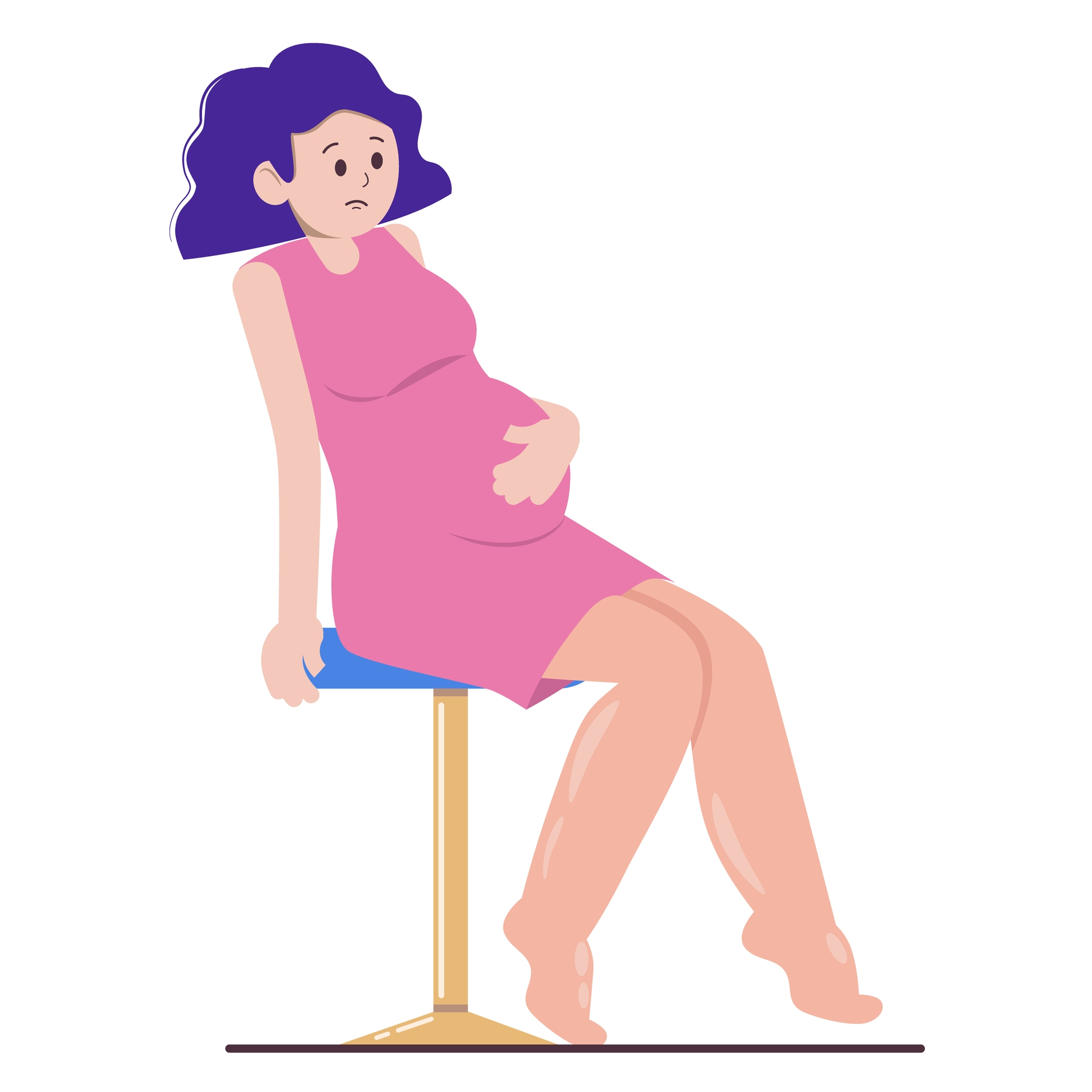Lower limb edema is common in the third trimester and postpartum due to increased plasma volume and retention of fluid as well as pressure on the venous system causing decreased return to the heart.1 A 2017 study (n=54) found that 77.8% of participants experienced edema in their feet and lower legs in the third trimester and during the 24-hour period following delivery.2 A 2011 prospective study of 41 Korean women found that intracellular water fell by 2.42 kg and extracellular water fell by 2.28 kg from two days postpartum to six weeks postpartum for a total reduction in body water of 4.7 kg.3
Postpartum edema alone is usually benign. Some more serious conditions can also lead to lower limb edema but are usually accompanied by other signs and symptoms.4 Conditions that can cause edema and their other symptoms are outlined below:
- Thrombophlebitis – usually unilateral edema, warmth, redness, moderate to severe pain, or tenderness on palpation
- Cellulitis – warmth, redness, moderate pain, or tenderness on palpation
- Heart failure – dyspnea on exertion, orthopnea, or paroxysmal nocturnal dyspnea
- Cirrhosis – spider angioma, palmar erythema, hepatomegaly, or jaundice
- Nephrotic syndrome – diffuse edema, polyuria, and swelling of the eyelids especially after prolonged recumbency
- Venous insufficiency – leg swelling is absent or minimal after recumbency but develops as the day progresses
- Pulmonary hypertension – obesity, snoring, or sleep apnea
- Deep venous thrombosis – unilateral calf tenderness or pitting edema5
World Health Organization practice guidelines state that edema improves for most women within a few months of giving birth.6
Pregnancy Belly
After delivery, the lower abdomen can return to prepregnant size, although how long this might take depends on a variety of factors from the time it takes the uterus to shrink, the time it takes for fluid build-up to abate, and lifestyle factors like diet and exercise. Generally, pregnant persons can return to their pre-pregnancy weight withing six months of delivery, although without diet and exercise, people can fail to lose the weight gained during pregnancy.7
The process of reproductive organs returning to their prepregnant state is known as involution. The uterus begins to contract shortly after delivery. Immediately postpartum, the uterus typically weighs 1,000 grams falling to about 500 grams by one week postpartum, and 50 grams at six weeks.8,9 After the initial contractions reduce the size of the uterus, involution begins to include autolysis and infarction of uterine blood vessels,10 aided by hormonal shifts that lead to an increase in collagenase and proteolytic enzyme activities.11
The presence of a slightly protruding abdomen in the postpartum period, colloquially called mommy pooch, is mostly attributable to diastasis recti abdominis, or the separation of the lower abdominal muscles by 2 cm or more.12 A 2016 study following 300 first-time pregnant women found that 45.4% had diastasis recti abdominis six months postpartum and 32.6% had it at 12 months postpartum. There’s little research on how long these lax abdominal muscles can last or effective interventions to aid with recovery.13 A meta-analysis of seven studies following participants for 6-16 weeks found that abdominal muscles moved 0.66-2.37 cm closer together, with most findings not reaching the threshold for significance and most studies rated as poor-quality evidence.
References
- Dalio MB, Gardenghi LA, Dezotti NRA. Pregnancy and Lower Limb Swelling. In: Tiwary SK, ed. Approach to Lower Limb Oedema. Singapore: Springer Nature Singapore; 2022:285-294.
- Ochalek K, Pacyga K, Curyło M, Frydrych-Szymonik A, Szygula Z. Risk Factors Related to Lower Limb Edema, Compression, and Physical Activity During Pregnancy: A Retrospective Study. Lymphat Res Biol. 2017;15(2):166-171.
- Cho GJ, Yoon HJ, Kim EJ, Oh MJ, Seo HS, Kim HJ. Postpartum changes in body composition. Obesity (Silver Spring). 2011;19(12):2425-2428.
- Seller RH, Symons AB. Swelling of the Legs. In: Differential Diagnosis of Common Complaints. 7th Ed ed.: Elsevier; 2018:369-378.
- ACOG Practice Bulletin No. 196: Thromboembolism in Pregnancy. Obstet Gynecol. 2018;132(1):e1-e17.
- WHO recommendations on antenatal care for a positive pregnancy experience. In. Geneva: World Health Organization; 2016.
- Rooney BL, Schauberger CW. Excess pregnancy weight gain and long-term obesity: one decade later. Obstet Gynecol. 2002;100(2):245-252.
- Negishi H, Kishida T, Yamada H, Hirayama E, Mikuni M, Fujimoto S. Changes in uterine size after vaginal delivery and cesarean section determined by vaginal sonography in the puerperium. Arch Gynecol Obstet. 1999;263(1-2):13-16.
- Mulic-Lutvica A, Bekuretsion M, Bakos O, Axelsson O. Ultrasonic evaluation of the uterus and uterine cavity after normal, vaginal delivery. Ultrasound Obstet Gynecol. 2001;18(5):491-498.
- Sokol ER, Casele H, Haney EI. Ultrasound examination of the postpartum uterus: what is normal? J Matern Fetal Neonatal Med. 2004;15(2):95-99.
- Cyganek A, Wyczalkowska-Tomasik A, Jarmuzek P, et al. Activity of Proteolytic Enzymes and Level of Cystatin C in the Peripartum Period. Biomed Res Int. 2016;2016:7065821.
- Sperstad JB, Tennfjord MK, Hilde G, Ellström-Engh M, Bø K. Diastasis recti abdominis during pregnancy and 12 months after childbirth: prevalence, risk factors and report of lumbopelvic pain. Br J Sports Med. 2016;50(17):1092-1096.
- Gluppe S, Engh ME, Bø K. What is the evidence for abdominal and pelvic floor muscle training to treat diastasis recti abdominis postpartum? A systematic review with meta-analysis. Braz J Phys Ther. 2021;25(6):664-675.


